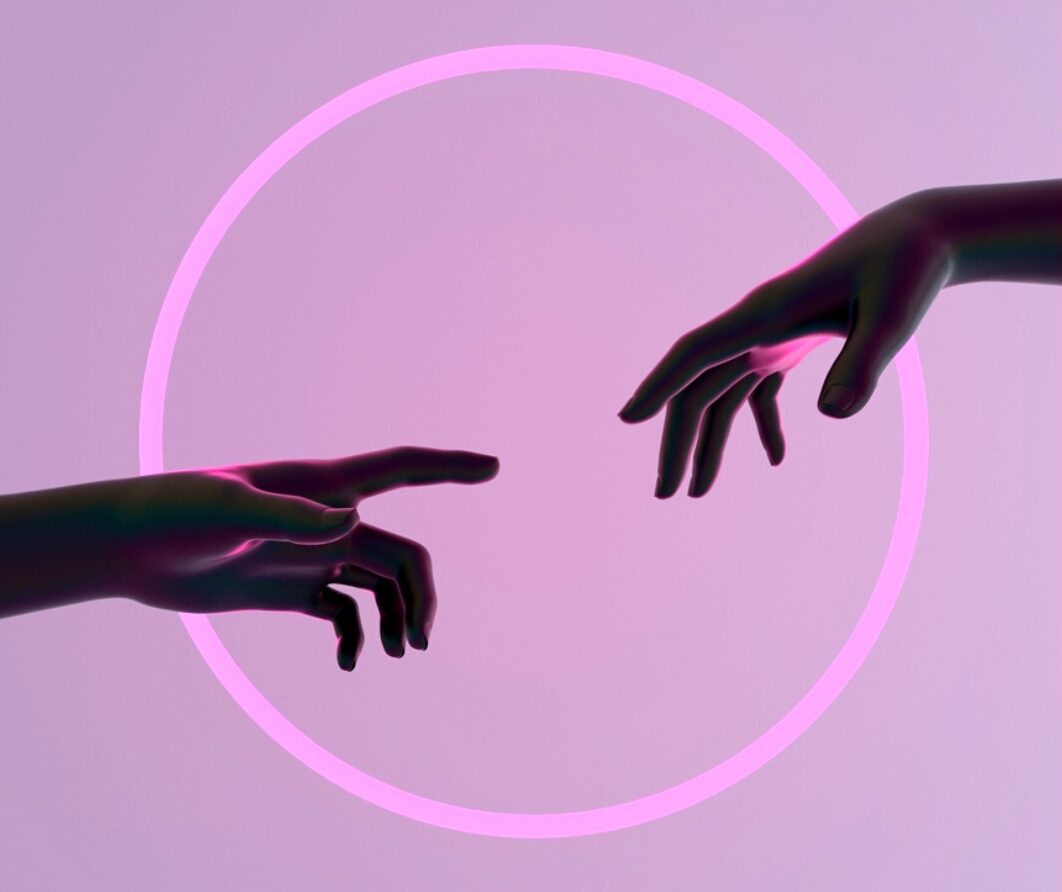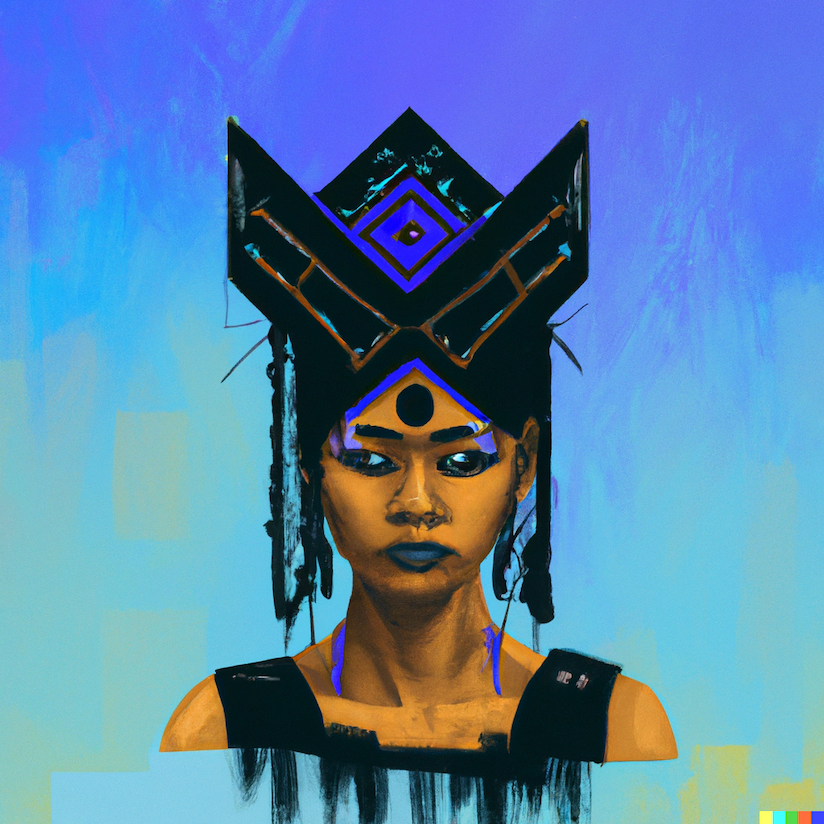
It is likely that by now, millions have marvelled at the apparent creativity of AI (Artificial Intelligence) programmes such as Dall-E-2 and ChatGPT. AI-generated art is growing in accessibility. Digital paintings of friends’ faces, in any manner of style from Pre-Raphaelite to Surrealist, are appearing on Instagram timelines – commissioned at a fraction of the price of your average human-artist fee. With Dall-E-2, the user inputs a prompt – e.g., “Paint me a picture of a frozen landscape in the style of Jack B. Yeats” – and the AI produces an output that is sometimes startlingly impressive. While the first outputs may disappoint, the user can explore multiple outputs, assessing each in terms of how well it meets set specifications. For ChatGPT – an evolution of OpenAI’s language programme GPT3 – the user again provides a natural language prompt, e.g., “How do coalition governments with rotating prime ministers perform?” and the AI produces an often surprisingly coherent text in response. Such rapid technological developments are leading to much speculation about the future of creativity and innovation, and some understandable unease among professionals whose skills might have to compete with these emerging AIs.

How has the creative process changed after AI?
There is a tradition in economics and other social sciences of modelling creativity and innovation as processes of searching across a potentially vast combinatorial design space. What does this mean in practice? Take a simple design prototype, that can be broken down into 10 elements, each of which may or may not be included in the final design. Each of the ten elements contains two possible outcomes: they are either left in or taken out. That adds up to 210 (1,024) possible combinations of elements. Now, suppose we want to create more subtle changes to the design, beyond the two demands of “add in” or “take out”. Given the power of exponential growth, the number of possible combinations can quickly rise into the billions, with dramatic further increases, if each element were to take on more values than simply “in” or ”out”.
A major constraint on the creative process is that testing various designs is a costly operation. This forces the creator to prioritise. We can therefore think of the creative process as one of predict-and-test (or generate-and-assess), with the prediction stage providing a ranking of possible designs based on their probability of success.
Up until now, this prediction stage has been almost solely in the purview of human ingenuity, but modern statistics-based AI can be usefully viewed as a prediction technology – where a predictive model is developed based on finding patterns in data. While AIs lack any true understanding of what they are doing, they are increasingly being used to support innovation in fields such as drug discovery, materials science and software development. One highly publicised success has been in the field of protein folding prediction, where DeepMind’s AlfaFold AI programme has significantly exceeded the state-of-the-art in international protein-shape prediction competitions.
Together with economists Ajay Agrawal of the University of Toronto, and Alex Oettl of the Georgia Institute of Technology, I have been working on models of creativity and innovation based on this idea of innovation as search over combinatorial search spaces, using a process of predict and test (see, for example, here and here).

While our initial interest was in understanding the potential role of AI in the innovation process, these models provide wider insights into the creative process more generally. In recent work (available on request), we are examining the factors likely to affect the evolution of AI as a general-purpose technology for innovation. These include the need for systems-level change, the impact of demonstration effects on the wider adoption of AI in discovery, and the evolution of the AI technology itself.
Along with its implications for the future course of creativity and innovation, a central question is: how will these new technologies affect demands for different skills? The likelihood is that machines will replace some tasks done by scientists, engineers and other creators, while new tasks will also emerge. It will be important that we position our students (and ourselves) as complements rather than substitutes to these rapidly emerging technologies.
In considering as educators the implications for future skill demands, we must ask what tasks in the creative process for which humans will likely retain an advantage. As a prediction technology responding to a prompt that helps a person find what they are looking for, AI can help prioritise the search, given its capacity to consider the massive search space of possibilities. But the initial idea must still come from human ingenuity and understanding. Humans will also remain the ultimate evaluator’s of the machine’s outputs. It is interesting that one predicted category of the new job market is that of the “prompt engineer”. However, this is just an indication of a more general truth that the ultimate spark of creativity is likely to remain a human competence. Our responsibility as educators is to ensure that our students retain this creative edge even as technology automates the more mundane parts of the creative search process.
Along with continued investments the arts, humanities and sciences, it will also be critical that our students are grounded in the ethical design and use of AI systems. While undoubtedly offering the potential to advance creativity and innovation, AI systems could cause harm in the hands of malign or even poorly informed users. The alignment of AI with human goals and interests is currently the subject of a large research effort. However, the massive public interest in recent advances in AI following the launch of ChatGPT has raised awareness of the quandaries surrounding the ethical use of AI for all educators.

It is inevitable that these technology-driven changes in the creative process will change the way science is done – and also possibly where that science is done. Smaller countries such as Ireland may be particularly challenged in a world where access to “big data” and massive computing power becomes more important. With these challenges in mind, a second recent strand of my research examines the particular challenges of achieving scientific leadership in smaller countries and regions.
Small countries and regions face a particular challenge in justifying large investments in science. A largely welcome feature of science is that its benefits tend to spill out to the global knowledge stock, and are thereby available to all. But this can mean that a small country will only capture a small fraction of the total benefits from its science investments. A second potential disadvantage of small regions occurs when there are economies of scale across a research ecosystem, putting smaller locations at a disadvantage compared to their larger competitors.
These scale challenges can explain some of the features of science policy in smaller countries. First, there tends to be a greater focus on more applied research relative to more basic research. Where the assumption is the knowledge spill overs from the former are more likely to be “locally sticky” (i.e. the local region retains a disproportionate share of the spill overs). Second, there is an emphasis on integrating into international knowledge networks and thereby increasing effective scale – such as rewarding involvement in EU-funded consortia. Third, we see an emphasis on developing local centres of excellence in targeted research areas that have the scale to be internationally competitive.
In research funded under Science Foundation Ireland’s Science Policy Programme, my research team and I explore on a fourth element of this policy mix – star scientist recruitments who catalyse the development of targeted research areas. ‘Stars’ here refer to highly productive and networked scientists. Such star recruitments can support the development of sufficient scale (partly by their effects on subsequent recruitment and retention), while also helping to integrate local scientists into international networks.
Using an event-study methodology, we investigate the effects of star recruitments on departmental and individual scientist productivity in three small open economies – Denmark, Ireland and New Zealand. The event is the arrival the star; and our dynamic methodology allows us to compare trends in productivity in the years before and after the star’s arrival, while controlling for various factors that affect the probability of a star’s arrival.
We find evidence of a large impact at the departmental level after a ‘star’ arrives – an average increase of approximately 20% in citation-weighted publication outputs after four years (see here). While we are cautious in treating this estimated effect as causal at the departmental level, our ability to identify control scientists in non-star-treated departments makes us more confident in making causal statements at the individual incumbent scientist level. At the individual level, we find an effect on citation-weighted scientific output of approximately 5% after four years.
In related work led by PhD student Anil Yadav, we examine one mechanism, which may help to explain this positive impact – co-authorship. The estimated effects of an incumbent scientist co-authoring with a star are significant. Interestingly, we find that creative productivity among incumbents who co-author with stars increases, even when we exclude the initial co-authored output from our study (see here).
Another mechanism through which stars might positively affect their new peers is through mentorship. Here, in work led by PhD student Akhil Sasidharan, we use the “paper trail” provided by the natural language processing of acknowledgement texts in published papers. Taking an acknowledgement as a (noisy) indicator of mentorship, we find evidence of a boost to productivity in the year the acknowledgment to a star occurs, but the productivity effect quickly fades unless there is evidence of sustained mentorship, indicated by acknowledgements to the star over multiple years.
In ongoing work led by post-doctoral researcher Jefferson Galetti, we are also exploring how the size of the star-arrival effect is mediated by how related the work of the star and incumbent are. We use various indicators to measure relatedness, e.g., an overlap of the journals in which they have published, and an overlap in the keywords listed on their publications. We hypothesise that increases in relatedness have both a positive effect (due to increase in the efficiency of knowledge exchange) and a negative effect (due to redundancy as the knowledge bases increasingly overlap).
Finally, we complement this quantitative analysis with a qualitative analysis based on interviews with stars recruited under the SFI Research Professorship Programme and the Niels Bohr Professorship Programmes in Denmark, led by Eoin Cullina of Atlantic Technological University. (1) The early results are consistent with the quantitative results above in pointing to factors that facilitate the engagement of recruited stars with their new peers.
Valuing the creative economy: what cost-benefit analysis can and cannot do.
There is an understandable demand from policy makers to put a value on the creative economy. With rising concern about the sustainability of our multinational-driven industrial strategy, greater stress is placed on the value of local innovation eco-systems. As an economist, readers will not be surprised to learn that I think the world has too little cost-benefit analysis. In a world with many competing demands on resources, there is a case for demanding that policy interventions pass a cost-benefit test.
Yet, the dirty little secret of cost-benefit analysis of complex systems is that it is possible to get almost any result you want, by careful choice of assumptions. One feature of innovation ecosystems is what economists call “strategic complementarities”. Strategic complementarities occur when two the decisions of two or more participants mutually reinforce one another. Where the return on doing more of one thing – say, university research – reinforces investment in another thing along other complementary dimensions – say support for local artists or the R&D activities of local industries. The outcomes of multiple complementary investments can therefore be hard to predict.
While investments at the frontier of technology-supported creativity and innovation will be important, machines lack – at least for now – anything like human-level understanding. The ultimate seed for creativity will therefore remain our human ingenuity. Human skills in subjective evaluation and objective testing will also continue to be required to assess the outputs of the creative process. As of now, we do not have a single metric that allows us to value the various parts of this emerging creative system.
There are times, however, when you have to make a leap of faith. While estimates of the value of the creative economy may need to be taken with a grain of salt, the achievement of sustainable growth almost certainly depends on making investments on the multiple fronts required to achieve a vibrant creativity-supporting economy.
(1) We are also delighted to have recently welcomed Ukrainian economist Olha Novikova to the team under a supplemental grant to our SFI funding under their Displaced Ukrainian Researchers scheme.